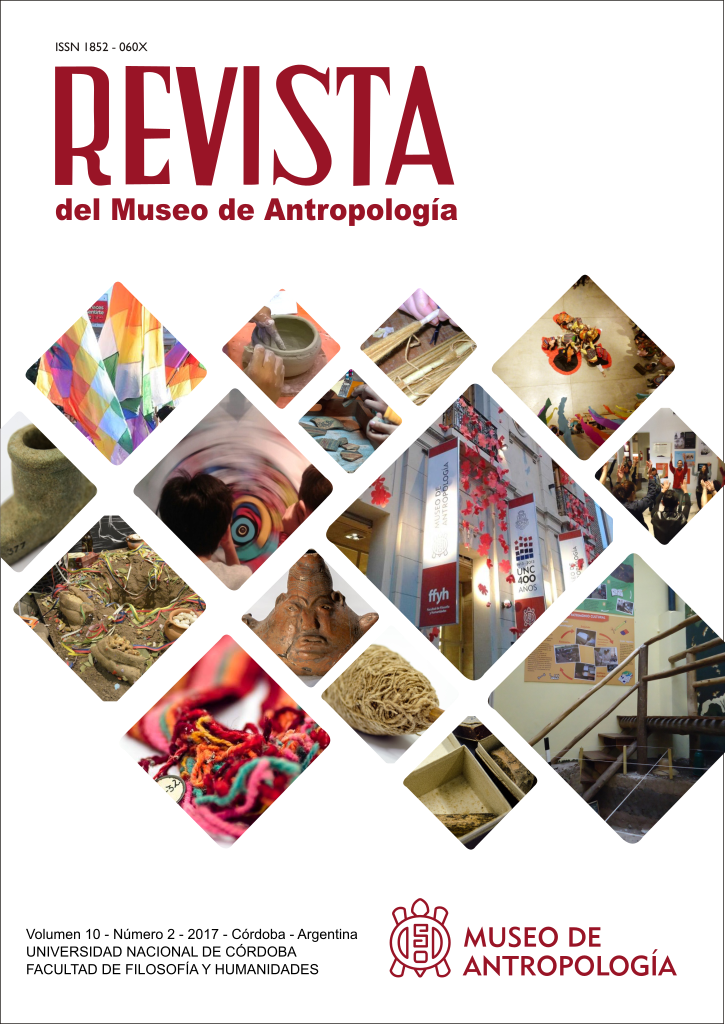Introduction to the Dossier Bone Markers of Activity: Approaches and Limitations from Bioarchaeological StudiesThis dossier gathers the works presented in the symposium that had the same name, and was coordinated by us, in the framework of the XIV Congres
DOI:
https://doi.org/10.31048/1852.4826.v10.n2.18916Keywords:
bone markers, activity, bioarchaeological studiesAbstract
This dossier gathers the works presented in the symposium that had the same name, and was coordinated by us, in the framework of the XIV Congress of the Latin American Association of Biological Anthropology (ALAB) during October 18-21, 2016 in the city of Tacuarembó, Uruguay. Six papers were presented in which different methods were discussed and applied both for the survey and for the statistical analysis of bone markers that can provide information about levels of physical activity along with their social, cultural and adaptive implications. The results obtained were presented and their scope and limitations were discussed, taking as case studies archaeological populations of Chile and Argentina and contemporary Portugal.
Downloads
References
limbs. International Journal of Osteoarchaeology. DOI: 10.1002/oa.2597 DOI: https://doi.org/10.1002/oa.2597
Bass, M. 1971. Human Osteology: a laboratory and field manual of human skeleton. Editor Michel K. Trimble. Missouri Archaeological Society, Columbia
Hawkey, D., C. Merbs. 1995. Activity induced musculoskeletal stress markers (MSM) and subsistence strategy changes among ancient Hudson Bay Eskimos. International Journal of Osteoarchaeology, 5: 324-338. DOI: https://doi.org/10.1002/oa.1390050403
Henderson, C., V. Mariotti, D. Pany-Kucera, S. VIllotte, y C. Wilczak. 2013. Recording specific entheseal changes of fibrocartilaginous entheses: initial tests using the Coimbra method. International Journal of Osteoarchaeology, 23: 152-162. DOI: https://doi.org/10.1002/oa.2287
Henderson, C., E. Nikita. 2015. Accounting for multiple effects and the problem of small sample sizes in osteology: A case study focusing on entheseal changes. Archaeological Anthropological Science, DOI 10.1007/s12520-015-0256-1. DOI: https://doi.org/10.1007/s12520-015-0256-1
Henderson, C., V. Mariotti, D. Pany-Kucera, S. Villotte y C. Wilczak. 2016. The new “Coimbra method”: a biologically appropriate method for recording specific features of fibrocartilaginous entheseal changes. International Journal of Osteoarchaeology, 26(5): 925-932. DOI: https://doi.org/10.1002/oa.2477
Mariotti, V., F. Facchini y M. Giovanna Belcastro. 2007. The study of entheses: proposal of a standardizedscoring method for twenty-three entheses of the postcranial skeleton. CollegiumAntropologicum, 31: 291-313.
Luna, L., C. Aranda y A. Amorim Alves. 2017. Reflexiones sobre el relevamiento y análisis comparativo de patologías osteoarticulares en restos esqueletales humanos. Revista Argentina de AntropologíaBiológica, 19(1): 1-8. DOI: https://doi.org/10.17139/raab.19.1.8
Nikita, E. 2014. The use of generalized linear models and generalized estimating equations in bioarchaeological studies. American Journal of Physical Anthropology, 153: 473-483. DOI: https://doi.org/10.1002/ajpa.22448
Resnick, D., G. Niwayama. 1983. Enthesis and enthesopathy: anatomical, pathological and radiological correlation. Radiology, 146 (1):1-9. DOI: https://doi.org/10.1148/radiology.146.1.6849029
Ubelaker, D. 1978. Human skeletal remains: excavation, analysis, interpretation. Smithsonian Institution, Taraxacum, Washington, DC.
Published
How to Cite
Issue
Section
License
Those authors who have publications with this Journalaccept the following terms:
a. Authors will retain their copyrights and guarantee the journal the right of first publication of their work, which will be simultaneously subject to the Creative Commons Attribution License (Licencia de reconocimiento de Creative Commons) that allows third parties to share the work as long as its author and his first publication in this journal.
b. Authors may adopt other non-exclusive licensing agreements for the distribution of the version of the published work (eg, deposit it in an institutional electronic file or publish it in a monographic volume) provided that the initial publication in this journal is indicated.
c. Authors are allowed and recommended to disseminate their work on the Internet (eg in institutional telematic archives or on their website) before and during the submission process, which can lead to interesting exchanges and increase citations of the published work. (See The Effect of Open Access - El efecto del acceso abierto)












